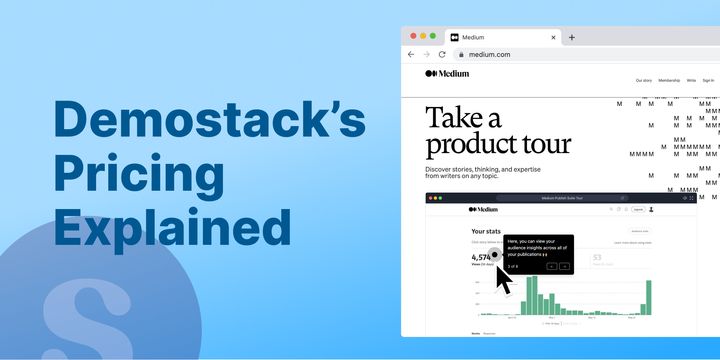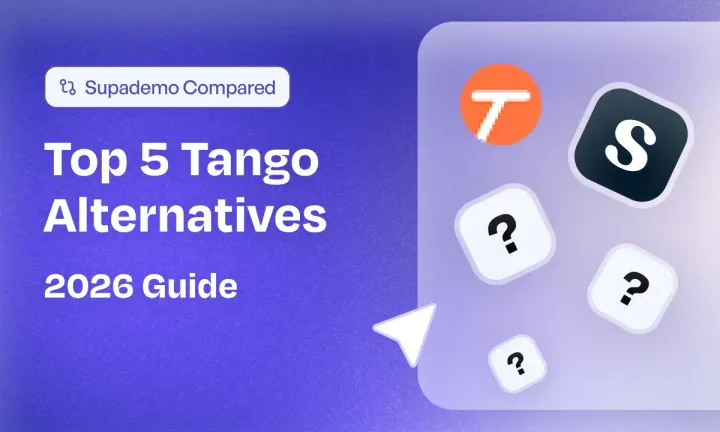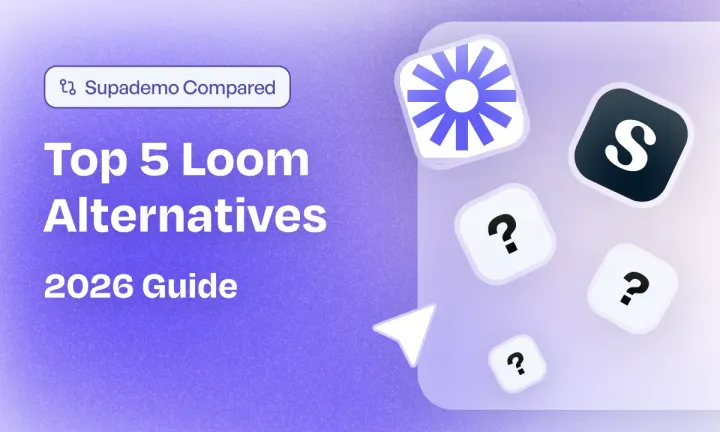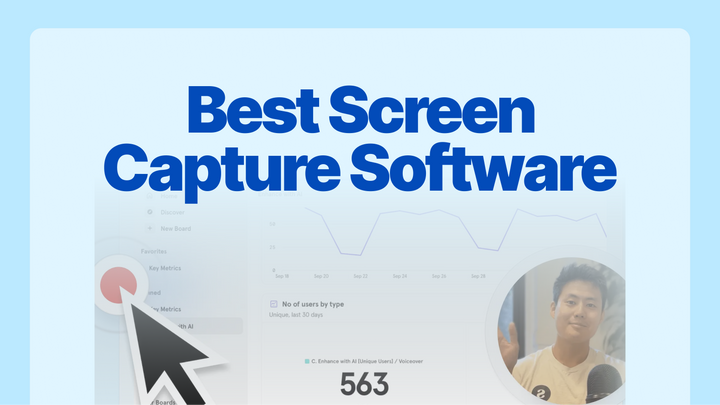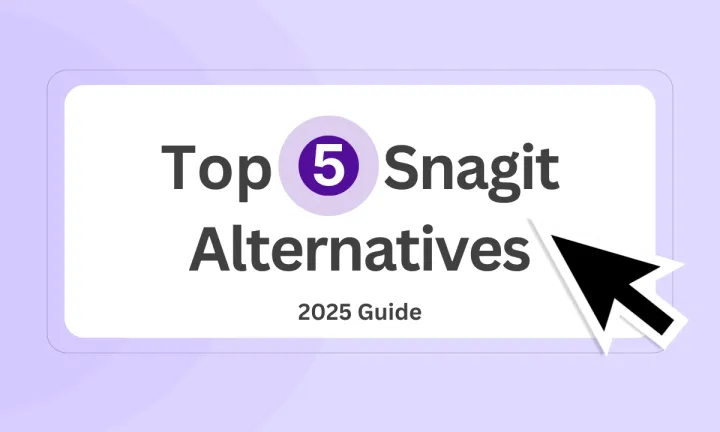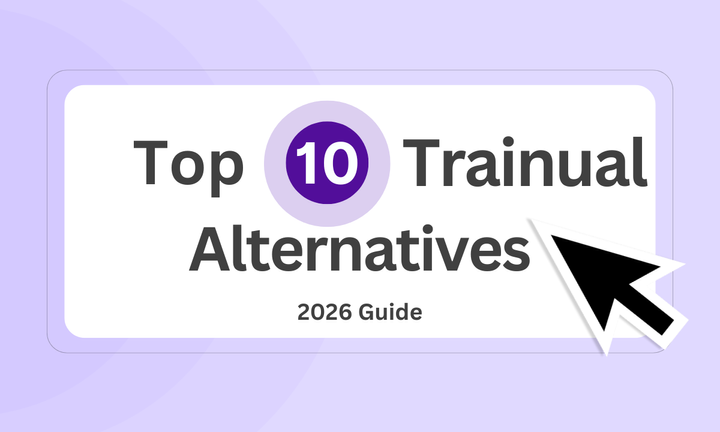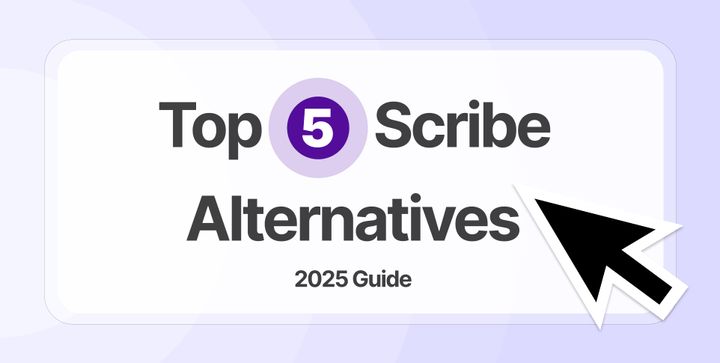Is Demostack's pricing competitive enough to make it a viable demo automation platform for startups and SMBs?
Confused by Demostack's limited pricing information online? Not sure about user access, contract lengths, or features available? Not sure who Demostack's competitors or alternatives are?
You're not alone.
In this guide, we will explain Demostack's pricing structure, what's included in each plan, and the platform's strengths and weaknesses.
We'll also share some Demostack alternatives and competitors, including Supademo, which offers similar demo automation capabilities at a fraction of the cost.
What is Demostack?
Demostack is one of the leading demo automation platforms that helps you build interactive product demos, live demos, mobile app demos, and sandbox product environments.

The software is more helpful sales and solutions engineering teams due to Demostack's sandbox and product overlay functionality.
How does Demostack work?
Similar to other interactive demo platforms in the market, Demostack captures the front end (the interface that’s visible to the users) of the software through HTML cloning. But, unlike a simpler and less technical Chrome extension, they have a built-in HTML capture technology that clones the front-end of a software application.
With their no-code demo builder, you can clone your demos, develop a sandbox environment, or create a demo for your mobile app. This is similar to larger enterprise platforms like Walnut or Reprise.
Demostack Pricing Plans: Detailed Analysis
Before we dig deeper into Demostack's pricing plans, let's see which pricing model they uses and if it's the best for you. Commonly in SaaS, there are three pricing models used:
- Freemium pricing model: The freemium model involves companies offering limited-time access to all their plans as a trial period.
- Tiered pricing model: In a tiered pricing model, you can access certain features depending on your plan.
- Per user pricing model: Per-user pricing plans allow you to pay based on the number of users accessing the software.
Demostack's pricing is a per-user based pricing model and their price starts at $50,000 per year. But, you need to book a discovery demo to get specific pricing.
Their pricing is divided into two parts: a platform fee and a per-user fee. You pay a platform fee for the base package you need. On top of that, you need to pay a separate amount based on the number of seats you need.
Here is a list of features you get by signing up for Demostack's pricing:
- SSO / SAML
- Unlimited Live demos
- Add-on Mobile app demos
- Unlimited Sandbox leave-behinds
- Unlimited Interactive product tours
- HubSpot, Slack, and SFDC Integrations included
- Management controls: Roles, permissions, workspaces
- Implementation and services: Full Implementation + Dedicated CSM
Does Demostack's pricing plans have a free trial?
No, Demostack doesn't offer a free trial. So, testing the tool before buying its plans is nearly impossible. Demostack's pricing also doesn't include a free plan for their demo automation software.
However, their website has several interactive product demos that give a sneak peek into their product and features.
When Should You Choose Demostack?
Demostack is a good fit if
- You want to create mobile app demos
- you are a mid-market or an enterprise organization
- you have a large budget (their price starts at $50,000 annually)
- you want to build demos primarily for sales and solutions engineering use cases (live demo calls, outreach, etc.)
Demostack isn't a good fit if
- you want a free trial or start with a free plan
- you have a lower budget but want advanced features
- you're a startup or fast growing company < 100 employees
- you want an easy and user-friendly tool that anyone on your team can use with no learning curve
- you want to create and leverage the power of interactive demos for customer success, onboarding, or training
Feature-packed, Affordable Demostack Alternative: Supademo

Undoubtedly, Demostack is versatile at demo automation, but it might not be the right fit for you based on features, ease of use, or cost. There are several Demostack alternatives that have similar features, but in an easier, more intuitive, and cost effective package.
As mentioned above, Demostack is expensive (starting price is $50,000), has a much narrower use case (i.e. solutions engineering), and is largely unsuitable for early-stage or small to mid-sized businesses.
If you don’t see yourself in that checklist, you'll likely want to explore alternatives to Demostack. Most likely, you'll want a demo automation platform that is:
✅ Multi-functional
✅ User-friendly
✅ Feature-packed and affordable
Supademo is one of the leading interactive demo platforms that checks these boxes, and more.
“Supademo has been a huge asset across multiple departments and workflows across easy. We use Supademo across multiple departments, covering all our software solutions. - Felix True, Head of PreSales at Easy Software
Now, let's explore how Supademo fits in as a top alternative to Demostack - specifically when it comes to pricing, usability, and functionality:
User-friendly product demos
Supademo is among the easiest-to-use demo automation platforms, as per G2. In fact, Supademo is tied for the first spot with a usability score of 9.3, beating Demostack, which ranks #15 due to more complex features and technically complex interface.
Supademo's usability score is high due to a simple recording experience, an intuitive AI-powered demo editor, and a robust suite of features like demo branching, dynamic variables, or lead capture.
Each feature is self-explanatory and intuitive for non-technical users to be able to navigate, so you don't need to contact customer support now and then to learn how a specific feature works.

Multi-functional use cases
Supademo beats Demostack when it comes to lateral use cases across the organization – not only because it is more affordable but also because of its leading feature-to-pricing ratio.
Unlike Demostack pricing, which starts as high as $50,000 annually, Supademo offers competitive features starting at just $27/month – with no annual or contract lock-in.
Some of the most helpful features you get are mentioned below:
- Multi-demo showcase collections
- Is your product demo experience inconsistent?
- Are there multiple versions of demos floating around, creating confusion?
- Are demos too long and unengaging for users?
- Do you spend hours searching for the right demo content for each prospect?

If you said yes to any of the above questions, show the perfect solution for you.
With Supademo's multi-demo showcase, creating and updating multi-demo tours and collections is 10x easier. For example, you can have a customer onboarding demo kit and create chapters for various features related to your software.
See it in action here 👇🏼
2. Demo gating
Interactive demo gating helps you generate highly qualified leads, gauge the viewer's buying intent, and gather valuable data to personalize demo calls.
Unlike traditional demo processes, which demand synchronous scheduling and accommodating different time zones, you can eliminate these issues and build a highly qualified pipeline of prospects through demo gating.
Supademo's demo gating feature helps you pull in the reader by giving them enough glimpses of your product's features. Once they're engaged, you ask for their email address.
Here's an example of a gated demo:
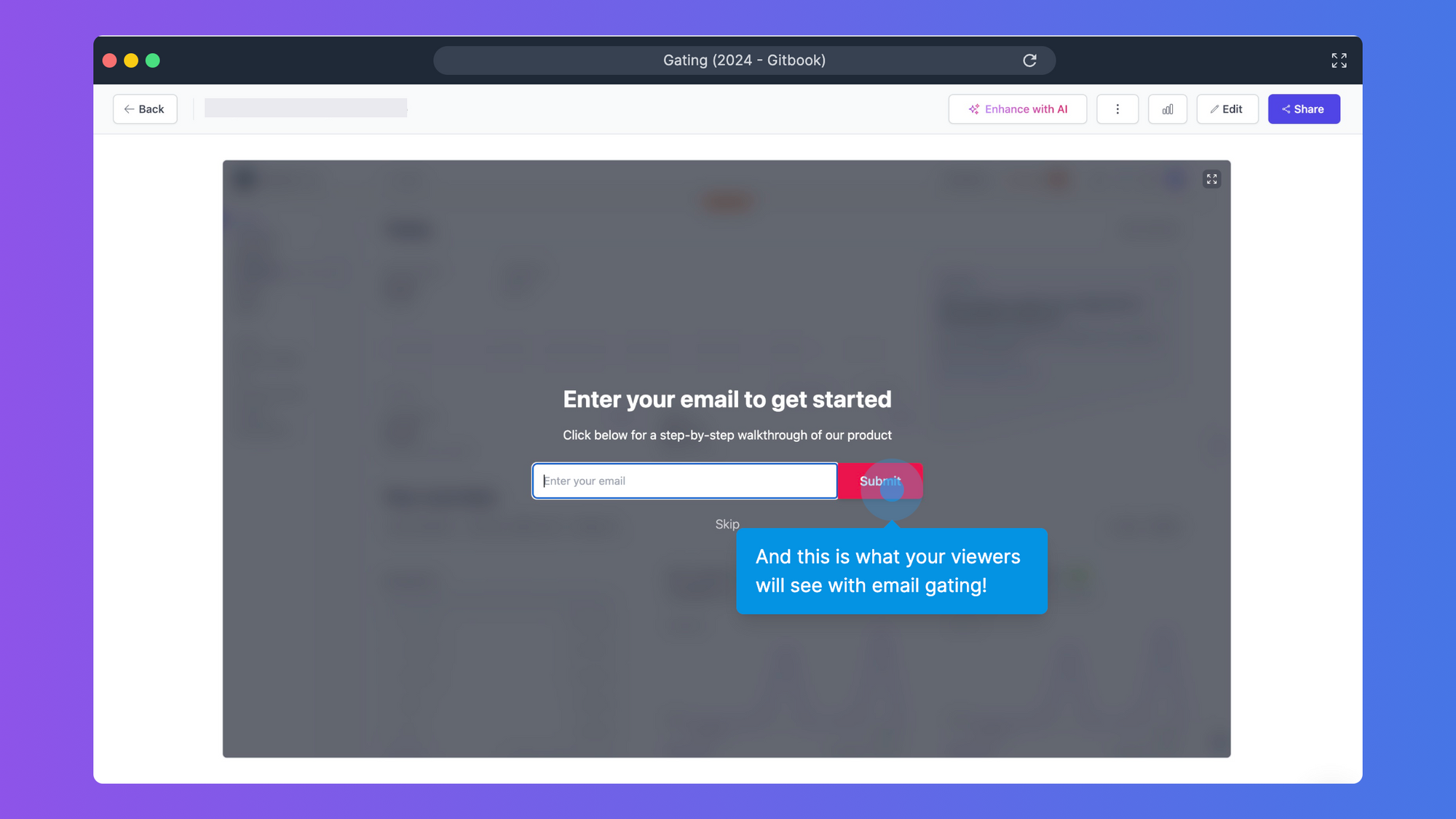
3. Conditional Branching and Dynamic Variables
Branching allows your viewers to choose their own demo journey within your Supademo - ensuring a better interactive and engaging experience.
This can be used alongside dynamic variables to highly personalize interactive demos for different personas, companies, and prospects.
Ultimately, conditional branching and variables help you create demos that lead to higher engagement, more qualified leads, and personalization at scale.
Here's an example of dynamic variables in action:
4. Generative AI Text, Voice, and Translate
On Supademo's paid plans, you'll get access to Supademo AI, which helps you:
- rewrite/generate hotspot texts based on prompts or the context of the screen capture
- add voiceovers to dictate the steps with your preferred tone and accent
- translate your demo in 15+ languages in both text and voiceovers
This not only saves you time but allows you to create and scale demos and enablement materials across languages and use cases.
5. HTML demo-recording to create pixel-perfect demos
Create true-to-life product demos in minutes with Supademo's HTML cloning technology.
Unlike traditional screen recordings, Supademo captures the complete HTML and CSS of your application, preserving all interactive elements, hover states, and animations.
The result? A pixel-perfect replica that lets users explore your product just like the real thing. Edit content, swap data, or personalize the experience after recording - all without touching code. Share your interactive demos anywhere or embed them seamlessly, knowing they'll maintain their fidelity and functionality wherever they're viewed.
Affordable demo automation plans
Supademo’s free plan
Supademo's free plan offers access to one user with a five demo creation limit. Other features include:
- Smart copy
- Demo overlays
- Standard analytics
- Supademo watermark
- Copy steps and images
- Export as GIF and MP4
- Share as a link or embed
- Automatic hotspot text generation
Supademo’s paid plans:
Supademo offers two paid plans along with a custom plan:
- Pro: Starting at $27/month per creator
- Scale: Starting at $38/month per creator
You get a 14-day free trial for each plan to test the features included in that particular plan.
For instance, our scale plan 14-day trial gives you access to test conditional branching and demo gating.

Demostack vs. Supademo Pricing Comparison
| Plan | Supademo | Demostack |
|---|---|---|
| Free |
$0 / creator / month
|
N/A |
| Pro |
$27 / creator / month
|
$150 / month
|
| Scale |
$38 / creator / month
|
$500 / month
|
| Growth |
$350 / month
|
$1,000 / month
|
| Enterprise |
Custom
|
Custom
|
Demostack Pricing FAQs
What does Demostack do?
Demostack is an interactive product demo software platform designed to help companies create and deliver more effective product demonstrations. Demostack's goal is to help companies accelerate their sales cycles and improve win rates.
What is Demostack's pricing?
Demostack's pricing can start as high as $50,000 per year, making it one of the more expensive options in the demo automation market. This high price point can put it out of reach for many startups and small businesses.
Who are Demostack's main competitors and alternatives?
The main competitors to Demostack include Reprise, Walnut.io, Storylane, Navattic, and Supademo. These platforms offer similar demo creation and automation features at competitive price points.
Are there free alternatives to Demostack?
While most robust demo automation tools require a paid subscription, some platforms offer free trials or limited free plans. Supademo, for instance, provides a free trial that allows businesses to test its capabilities before committing to a paid plan.
With the free plan, you can create up to five demos with unlimited views without a credit card.
How does Demostack compare vs Walnut?
Demostack and Walnut both offer demo creation capabilities, but Walnut is generally considered better known and more popular with larger enterprise users.
What are the key differences of Demostack vs Reprise?
While both platforms offer demo creation and customization, Reprise provides a wider range of products catering to different use cases. Reprise also offers more integrations out-of-the-box compared to Demostack, including HubSpot, Salesforce, Marketo, and Google Analytics.
Create High-Converting Interactive Product Demos with Supademo
While Demostack offers a robust and feature-packed demo automation platform, a technically challenging implementation and expensive annual plans make it a tougher choice for many buyers.
Alternatively, Supademo is a fast, easy-to-use platform for anyone to create and share interactive product demos in just a few minutes. There's no annual lock-in, no technical work needed, and the platform is malleable to various use cases across sales enablement, product marketing, or customer success.
Over 10,000 users across 75 countries have built tens of thousands of Supademos – all in just a few minutes.
Within ten minutes, I recorded my first demo and published it on Substack. Our dev team has added tutorials to our own SaaS app already. Thank you for creating such a simple and intuitive tool for creating demos. - Richard Stiennon, Chief Research Analyst


